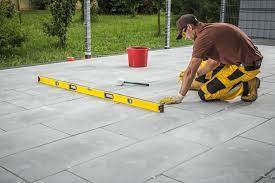Pouring concrete near a property line can be a delicate matter. It’s important to understand that property lines are not always clearly marked, and encroaching on a neighbor’s property can lead to disputes and legal issues. Therefore, it’s essential to research and follows local laws and regulations before pouring concrete near a property line.
The first step is to identify the exact location of your property line. You can usually find this information on your property deed, or you can hire a licensed surveyor to determine the boundary lines of your property. Once you have identified the property line, you need to know the local zoning and building codes that apply to your area.
The distance that you can pour concrete from your property line will depend on the local zoning and building codes. Some cities and municipalities may have specific setback requirements that dictate how far a structure or concrete can be from the property line. In other areas, there may be no specific setback requirements. But there may be guidelines or rules regarding the use of the space adjacent to the property line. For example, in some areas. You may be required to leave a certain amount of open space between your property line and your neighbor’s property line.
It’s important to consult with your local zoning and building department to find out what regulations. And requirements apply to your situation. They can provide you with the most up-to-date information and ensure that you are following the proper procedures. Some areas may require you to obtain a permit before pouring concrete. And failing to do so can result in fines and other penalties.
In general, it’s best to err on the side of caution and leave some distance between your property lines and the concrete. Even if there are no specific setback requirements, leaving some space can help avoid potential disputes with neighbors. It can also help to ensure that the concrete does not interfere with any underground utilities or drainage systems.
In addition to zoning and building codes, it’s also important to consider the potential impact on your neighbors. Pouring concrete near property lines can affect the neighboring property. Particularly if the concrete is not level or drains water onto the adjacent property. It’s essential to communicate with your neighbors and address any concerns they may have about the concrete pouring process.
To summarize, the distance that you can pour concrete from your property lines will depend on local zoning and building codes. It’s important to identify the exact location of your property lines and research the local laws and regulations. And obtain any necessary permits before pouring concrete. Leaving some space between the concrete and the property lines can help avoid potential disputes with neighbors and ensure that. The concrete does not interfere with any underground utilities or drainage systems. Finally, communication with your neighbors is key to addressing any concerns they may have about the concrete pouring process.

